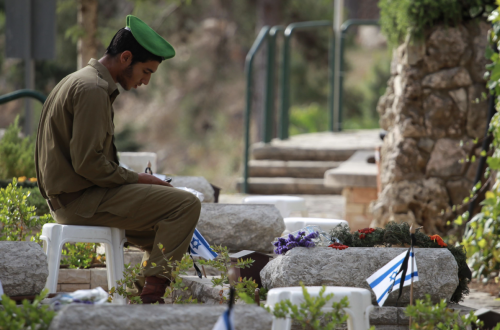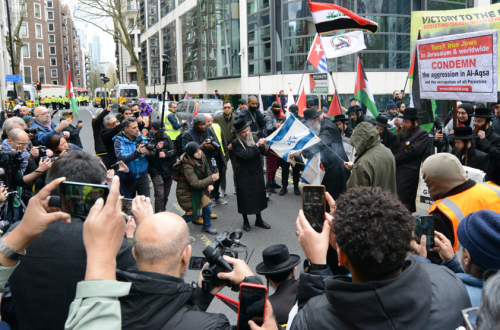How ISIS Fights: Military Tactics in Iraq, Syria, Libya and Egypt is an exposé of how ISIS – one of the deadliest terrorist groups in modern times – was able to use conventional military tactics, urban terrorism and guerrilla warfare to achieve the occupation of over 120 towns and villages from Libya to the Southern Philippines.
It is probably no surprise that this book is very much needed for academics, analysts, policy makers and the public at large. It gives a glimpse into the psychology of how a clandestine organisation fights, the strategies it employs and the impact this has on the group’s ability to endure and expand. Understanding the inner workings of a terrorist group is difficult for the most skilful of scholars – given the clandestine nature of their operations – but Omar Ashour certainly lives up to that challenge.
How ISIS Fights is split into six chapters. The first chapter – Is It Mainly Tactics? – lays the groundwork for the rest of the book. It sets out first by explaining who ISIS are and the impact they have had. Unlike other biographical accounts of ISIS, this book firmly positions itself mainly with the military aspects of the group, rather than solely examining the causes of terrorism or why the group came into existence in the first place. The mid to latter section of this chapter is written with the academic in mind. It explores the following four variables as a means to explain how ISIS fights: popular support and regime-type, geography, state-sponsorship, tactics and strategies and finally organisational structures and peculiar features.
The following four chapters are case studies of Islamic State in geographical regions of the Middle East and North Africa: Iraq, Syria, Libya and Egypt. These case studies are mostly geared towards analysts that cover the current conflict that grips these regions.
There are clearly some nuggets of gold that the author presents the reader with. For example, in the case of Iraq, the Islamic State showed that it was able to learn and adapt by using past experiences. The author notes that the organisation inherited ISI’s experiences in small-scale production of suicide belts and fitting vehicles with explosives to produce S/VBIEDs and MBIEDs. Thus, there is therefore value in understanding where this learning goes and how it can possibly be used following the collapse of a terrorist organisation or the defection of terrorists – particularly those that came from foreign countries?
In the case of Syria, we also see how these past experiences worked in Islamic State’s favour. Intelligence-gathering was taking place in 2011, but Islamic State’s predecessor, ISI had already done a lot of the work from 2004. Intelligence on the Syrian political, military and jihadist scene provided the Islamic State with the local knowledge it needed to expand and succeed. This point seems to be particularly important, as it seems the Islamic State was looking at long term survival rather than quick wins. To do this, they had developed a ‘knowledge transfer pillar’ whereby conventional guerrilla warfare and terrorism tactics were being taught in makeshift camps by commanders. This resulted – in the space of two years – ISI and Jabhat al Nusra to become two of the deadliest terrorist organisations in the region, having started from a band of 30 men in 2011. Expansion was key to the success of the Islamic State.
With expansion being a prominent goal of the Islamic State, achieving it in Libya seemed to follow a trajectory similar to that in Syria. The Islamic State used iALLTR (intelligence; absorb/ recruit; loot; lead; transfer) modus operandi to achieve this. For example, The Islamic Youth Shura Council (IYSC) based in the remote town of Derna had already established its support to the Islamic State before Abu Bakr al-Baghdadi had even declared it was the Islamic State. This led former Libyan fighters in Iraq and Syria to return to their hometown in Derna, effectively providing them with a purpose to use their knowledge and skills of fighting and military tactics in a meaningful way. The author notes that commanders from foreign regions were able to provide local fighters with “rapid transfer of knowhows of tactical innovations, strategic shifts and operational knowledge relevant to combat effectiveness.” (p, 128).
The final case study analyses the situation in Egypt and how the Sinai Province (SP) – against the odds – still managed to endure and expand. The author finds this case study to be ‘puzzling’ because it was unlike the other regions discussed. Firstly, whilst the government backed centralised local military had a history of mediocrity in regards to performance, it still enjoyed support through funding and training from a superpower – the US. Additionally, it received support from other nearby governments such as Israel, Saudi Arabia and the United Arab Emirates. This coupled with the remote geographical regions, the lack of loyalty from the local tribes and populations set the odds against the Sinai Province. The author posits that the Sinai Province was able to endure as it was able to build up its military capacities from its predecessors from the early 2000s and concludes that this was a ‘decisive factor’. Furthermore, the Egyptian regime being ineffective and accused of human rights violations – in part – helped the Sinai Province to endure and potentially expand by absorbing other like-minded groups.
How ISIS Fights: Military Tactics in Iraq, Syria, Libya and Egypt is a well-researched and enlightening read. Whilst there are some tricky terms to get your head around, particularly in regards to military equipment, the author nonetheless seeks to explain it in a way that is accessible to the general public. For those that are in the business of researching conflict, terrorism and war, this book will certainly illuminate and provide them with other avenues to explore. For example, the concluding chapter signposts readers to other areas of parsimonious research that require further examination.
Dr Omar Ashour is an Associate Professor of Security Studies in the Doha Institute for Graduate Studies. He is the Founding Director of the Critical Security Studies Graduate Program (MCSS) and the director of the Strategic Studies Unit in the Arab Centre for Research and Policy Studies.
How ISIS Fights: Military Tactics in Iraq, Syria, Libya and Egypt can be purchased from all good bookstores.
Wasiq is an academic specialising in extremism and terrorism. Follow him on Twitter: @WasiqUK



